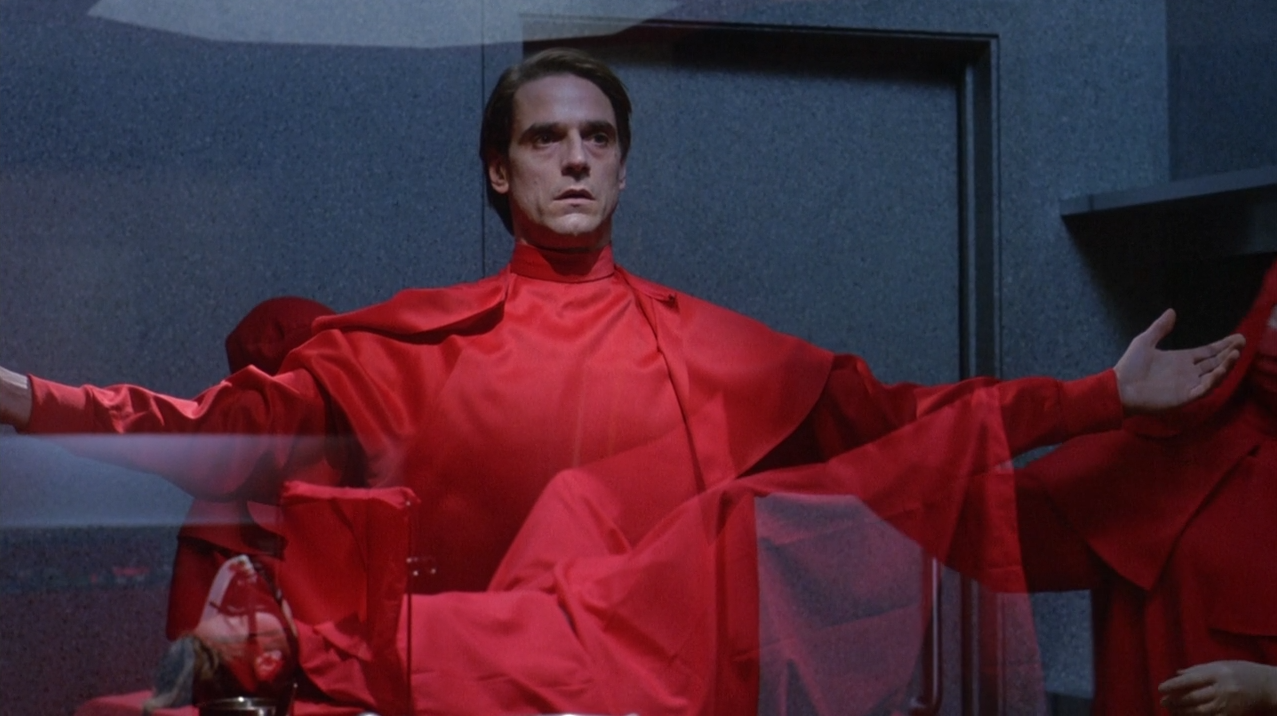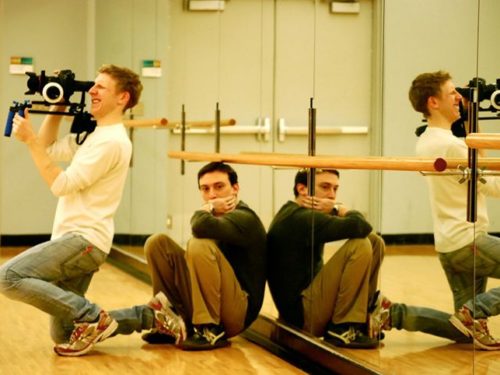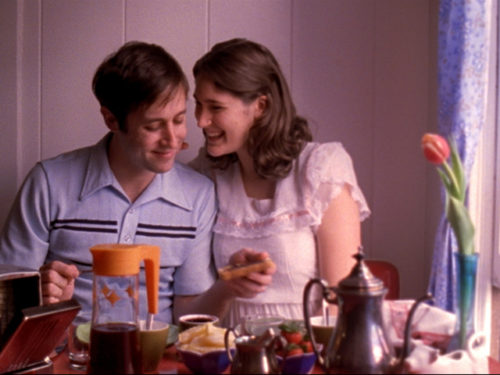A horror film shrouded in drama, a psychological thriller embedded in a character study, Dead Ringers captures the master of body horror at a moment of stylistic mutation
“We’re twins. I can feel your pain.” This line is not from David Cronenberg’s masterpiece Dead Ringers. It’s actually spoken by Arnold Schwarzenegger as Julius Benedict in Twins, the other signature film about twin brothers from 1988. One’s a pop-comedy about estranged fraternals and the other is a grotesque tragedy about inextricable identicals. On the surface, they could hardly be more dissimilar. Though Dead Ringers was originally pitched under the title Twins, and is based on the book Twins, by Bari Wood and Jack Geasland, an account of the real-life fate of Cyril and Stewart Marcus. And Cronenberg and Reitman were early business and creative partners in the ’60s and ’70s. They formed the Toronto Film Co-op together and collaborated to get Cronenberg’s first government-funded features, Shivers (1975) and Rabid (1977), off the ground. In both Twins and Dead Ringers, maybe all movies about twins, that unbreakable, mysterious connection forged at birth is taken as a given. The barrier separating individual consciousnesses is hazy. For Reitman, this moment from his twin movie is maudlin and sentimental. Cronenberg, for his part, echoes this statement repeatedly throughout Dead Ringers. But, instead of shallow tear-jerking, this symbiosis is another ripe avenue for exploring body horror. As Elliot Mantle (Jeremy Irons) says of his brother Beverly (Jeremy Irons), “Whatever goes into his bloodstream, goes into mine.”
Twins are seen as something other than individuals, as vaguely supernatural entities that can unlock hidden potentials in our minds and bodies. Twindom marks each sibling permanently with the genetic anomaly of their gestation and birth. Identical twins especially are unwitting sociological experiments: exact genetic replicas released into the world simultaneously to live separate lives, the gap between them determined by their individual experiences. “The truth is, nobody can tell us apart,” Elliot says, lamenting their cratering OB-GYN careers. “We are perceived as one person.” The Mantle twins are a statistical aberration with characteristics and identities that are all but indistinguishable to the outside world. And they have lived parallel lives into adulthood. As far as anyone is concerned, they are two people of a single flesh. They use this to their advantage but it is also their undoing. If one of them goes down, so does the other. The more they pull apart the tighter they are bound to each other. The fact that they are played here in this film by a single person, and are therefore actually, literally identical, makes the effect, and their intimate bond, extra uncanny, and Cronenberg’s dissection of identity murkier. Dead Ringers is obsessed with exploring and complicating the connection between the Mantle brothers, the terrible, inescapable, irreducible characteristics that make them intriguing dual/dueling specimens.
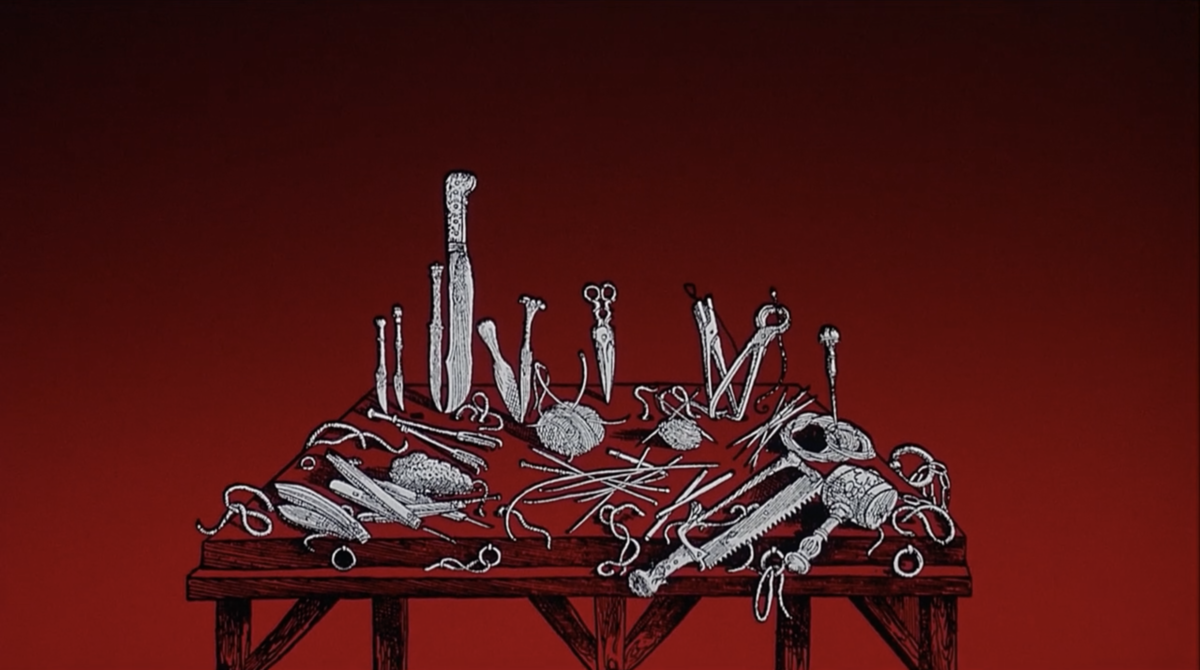
The history of twins in film follows two parallel lanes: one is shock value, the creepy dissonance of biological doppelgängers in close proximity solidifying into a stock horror trope; the other is comedy, the zany misadventures that are possible when swapping places unnoticed. Dead Ringers does both, crossing the wires: the Mantles’ detachment and spooky symbiosis rings occasionally comedic and their devious switcheroos play out as savagely cruel. Something like Brian DePalma’s Sisters (1972) or John Grissmer’s Blood Rage (1987) are instructive counterpoints to what Cronenberg is after here. Instead of twins exhibiting a Dr. Jekyll and Mr. Hyde dynamic, with one half of the duo living in the shadows and indulging their craven impulses, Dead Ringers shows the preternaturally gifted twin gynecologists living and thriving in the world, their personalities distinct but overlapping — a fragile equilibrium just waiting to be shattered. They also both give in to their worst impulses, developing a system by which they satiate their appetites for sex and adulation. Through exacting, rigorously choreographed motion-controlled camerawork, textured performances, immaculate compositions, striking costuming, and severe set designs, Cronenberg crafts an operatic mood piece with pristine, glassy surfaces and pitch black undercurrents. Over a period of months, the Mantles lifelong codependence reaches a breaking point; they diverge, dovetail, and relapse over the course of the film, the tumultuousness of their relationship as much of a habitual dependency as the drugs they inject into their veins.
Related: Cronenberg’s The Brood: Psychoplasmic Violations And Familial Crises by Frankie Vanaria
Dead Ringers begins in 1954 in, unsurprisingly, Toronto, Canada — the locus of all Cronenberg’s stories and anxieties from his early run on through his middle period. “You’ve heard about sex?” one nine-year-old Mantle asked the other, in the opening line. At this point, they are indistinguishable, dressed exactly the same and moving in unison. They proposition their neighbor to have sex with them in the bathtub, for research, to which she responds with anger and shames them. “They’re so different from us, and all because we don’t live underwater,” they conclude — gender relations, and the shape of society, boiled down to the biological imperative, and articulated absurdly, by children. Then the young Mantles are seen literally playing doctor, conducting a complicated gynecological procedure on an anatomically correct figurine. It’s an effective introduction to Cronenberg’s slippery tonal mind games and dark sense of humor. Even when the Mantles are at their peak, accepted in high society and perceived as well-adjusted and stable, this disaffected, alien approach to human biology lingers — very Freudian, that, childhood anxieties morphing into adult neuroses.The film then jumps to Cambridge, Massachusetts, 1967, when they are students at Harvard Medical School, now play-operating on cadavers, and taking liberties with their approach to innovation. Their brazenness and their codependence are gaining strength alongside their elevated acclaim within the industry. The Mantle retractor becomes “industry standard” and the twins’ partnership in life, love, and medical practice feels preordained.

The film essentially follows their downfall. The Mantles’ malpractice is firmly established in the first scene in the present day, Toronto ’88. The two are living together in an acetic, upscale loft and running a successful reproductive clinic together. Beverly is examining a new patient, Claire Niveau (Geneviève Bujold), a film and television actress of some renown, and he expresses concern, displaying a less than ideal bedside manner while noting that she has extraneous parts of her reproductive anatomy. He consults with Elliot, informing him that Claire has a three-chamber uterus — a “trifurcate,” he calls her. In the first of many ethical breaches, the two switch places, Elliot returning to examine Claire for himself, and Beverly reluctantly taking Elliot’s place at a dinner courting prospective donors to their research. Elliot (as Beverly) and Claire spend the night together and the next day he encourages Bev to do the same, telling him he “really must try the actress,” as is their usual arrangement. The brothers continue their back-and-forth relationship with Claire but Beverly falls in love with her, soon expressing a desire to pull away from his brother and have something for himself, an intimate relationship with another person.
But Claire discovers that she has been sleeping with both brothers and confronts them, severing ties with the pair. Beverly then begins to lose control, giving in to his substance abuse. He’s first seen drunkenly crashing an award gala. His escalating dependency on prescription pills follows, a recreational habit introduced to him by Claire herself. But Bev’s spiral is precipitated by Claire coming back into his life, after he happens to run into her at an art gallery. The two fall back in with each other, with Elliot now cut out, and Bev’s dual cravings for Claire and barbiturates take hold simultaneously. This reaches a tipping point when she leaves for several months to shoot a TV series. The separation sends Beverly into despair and a full-blown binge. He levels up to intravenous injections and his mind begins to crumble; he becomes paranoid, delusional, and, given his profession, extremely dangerous. Elliot tries to help him kick but soon decides to take radical measures to “get synchronized” with Bev by taking the same drug regimen. The two eventually succumb to their dual addictions, Bev killing Elliot through an unnecessary medical procedure to separate their conjoined bodies, and Bev overdosing in the arms of Elliot’s posed corpse.

The common refrain is that, with Dead Ringers, Cronenberg transitions from intellectualized schlock to psychological melodrama — focusing on the disintegration of the mind as opposed to the flesh. That doesn’t quite capture the intensity of the experience, or the degree to which Cronenberg is still deeply invested in the human body changing, mutating, and rebelling. Cronenberg’s previous work, and his emeritus position as the master of body horror, informs a work that is restrained but no less disturbing. There is, after all, a dream sequence where Claire bites into the pulsing, fleshy connective tissue between the two brothers, but the most upsetting scenes — like the examination of Mrs. Bookman (Miriam Newhouse) — conceal the trauma and physical violations beneath hospital gowns, reflected in close-ups of disturbed, pained faces. Dead Ringers contorts and conflates a whole mess of troubling and taboo subject matter into a work that is dense and strangely affecting. Cronenberg conducts precise, complex surgery himself to realize this masterwork. Fittingly for an ironist like Cronenberg, with Dead Ringers, he created a technically ambitious achievement about the nastiness of technical ambition. The dialogue in the movie is beautiful and rich, laced with multiple meanings and double entendres — the themes articulated right on the surface. The film is resonant, layered, and melancholy, even at its most frigid and withholding. This is a horror film shrouded in a drama, a psychological thriller embedded in a character study. It’s as abject, sordid, and perverse as anything in Cronenberg’s oeuvre, masked in a tragedy of doomed romance and drug addiction.
Related: The Brood (1979): Psychoplasmic Violations And Familial Crises by Frankie Vanaria
The fusion of technology and flesh that haunts Cronenberg’s filmography is infused in the Mantles’ profession. Intricate, invasive metallic equipment interacts with unseen anatomy at the hands of compromised men. The downward spiral of drug abuse that Beverly, then Elliot, then both of them, experience is the throughline in a narrative full of fixations, obsessions, compulsions, and rituals. Dead Ringers has shades of the tragic romanticism at the heart of The Fly (1986) but here it’s horribly mangled — and internalized — into something fascinatingly impure, a cocktail of misdirected desire, passion, lust, and genuine emotion. Dead Ringers is as psychoanalytic as anything in Cronenberg’s catalog, brimming with Freudian signifiers, anxieties, and perversions: doppelgängers, polymorphism, regression, incest, ego death, transference, the “dark continent” of female sexuality, even an intense dream sequence cutting the film in two. A Cronenbergian plot manifests inside Beverly’s mind as his delusions spiral out of control. “You don’t know what’s going on out there,” he tells Elliot while peering through the blinds. “The patients are getting strange.” You can see Dead Ringers anticipating the psychedelic sci-fi junkie fantasia of Naked Lunch (1991) and the profoundly complex fetishism of Crash (1996). In Claire’s bedroom, the medicinal and the sexual merge, especially during a moodily-lit scene of desperation, ecstasy, and bondage using surgical rubber and clamps. Beverly, and Elliot by proxy, is consumed by his fascination with Claire’s “fabulously rare” uterus, the new emotions he develops for her as a person, and his intensifying narcotics usage, all braided together in a tangle of biochemical dependency.

Compared to the noirish narratives of Cronenberg’s previous horror narratives, Dead Ringers turns toward a dreary gothic style. Claire even calls Elliott “Dracula” disparagingly at one point. Randall Balsmeyer and Mimi Everett’s gorgeous title designs, featuring repurposed 16th century engravings of antiquated tools and mythical creatures from medical texts, against a searing red backdrop, set the stage. These images tap into a terrible and disturbing medical lineage and also foreshadow the twisted bio-metallic devices that Beverly commissions in his druggy delirium. Even in our modern medical industry, where questions of procedure and humane treatment are supposedly settled, and strict guardrails guide new advancements to market, Cronenberg suggests there is still a porous membrane separating cruelty and ignorance, mercy and torture, discipline and barbarism, submission and consent. The ancient and the hyper-modern vie in many of the settings — impossibly large corridors of power decked in Greco-Roman motifs. The red uniforms of the operating theater, created by costume designer Denise Cronenberg, David’s sister and longtime collaborator, provide the most indelible image of the film: Beverly strung-out and gazing at his anesthetized patient, superimposed on the doctor by her reflection in the pane of the operating theater window, as he preps for surgery. The blood-red scrubs recall nothing if not Roger Corman’s The Masque of the Red Death (1964), shot by Nicolas Roeg, as well as Roeg’s own Don’t Look Now (1973). Like aristocratic, nocturnal counts, the Mantles’ medical practice and their loft are connected, occupying upper-reaches of a Toronto high rise overlooking a city square and the university hospital. “The beauty of our business is you don’t have to get out to meet beautiful women,” Elliot reminds Bev. The two settings — personal and professional — collapse together. Their home and the clinic are defiled, transitioning from state-of-the-art facilities into a drug den filled with refuse and blood — from sterility to squalor.
Cronenberg’s penchant for uncomfortable self-reflection comes through strongly in Dead Ringers. The medical establishment and the art world are constantly intersecting. Claire’s acting profession consistently steers the plot. Beverly browses minimalist art/furniture. Elliot and Beverly roleplay as each other as they conduct their ruses. The Mantles lair is full of intriguing, perplexing artwork and sculptures. And most infamously Beverly commissions chrome-plated instruments too radical for the medical establishment from local artist Anders Wolleck (Stephen Lack). The gynecological instruments for operating on mutant women are later seen on display in both the surreal operating theater and in the art gallery. The world of Dead Ringers is defined by steel blue and high-’80s modernism. Spaces meant to be welcoming and anodyne are ghastly and expressionistic. The interior design paradoxically screams artificial rather than fertile; impersonal rather than compassionate. Elliot’s preoccupation with his favorite program, Lifestyles of the Rich and Famous, is a particularly amusing encapsulation of their shared taste for objectification. It’s clear there is no higher purpose to their pursuit other than prestige, power, unfettered technological progress, and a vicious desire to perfect the mechanisms of the female body. Both art and science place a premium on ingenuity and experimentation, advancement at all cost. For the Mantle twins, women are bio-technological puzzles to be solved and mastered. Their psychic detachment, and value in the medical firmament, sanctions their compromised ethics and sexual violations.

There are more twins alive on Earth now than ever before in human history. More than that, the incidence of twindom is on the rise, due to advancements in modern medicine, particularly fertility treatments, coupled with the fact that women are having babies later in life on average. The new distaff Dead Ringers mini-series, overseen by Alice Birch, grapples with this shifting reproductive landscape over the past three and a half decades, relegating Cronenberg’s film to a particular time, place, and perspective. But the original Dead Ringers remains a perfect, self-contained encapsulation of a tried-and-true horror trope, refracted through the formidable intelligence and uniquely uncompromising sensibilities of Cronenberg’s mind. The ambivalence and dispassion of the Mantle twins toward their trusting, unbearably vulnerable patients is precisely the source of the film’s power and horror, and what makes it eternally relevant. It’s a key turning point in his filmography and a rich standalone text. True to its subject matter, Dead Ringers functions like Cronenberg’s twin cinema, a form of poetry with two parallel columns that mirror and diverge and contrast and complement, that can be read in multiple directions. Different angles reveal unseen depths and new lines of inquiry within Dead Ringers. Invisible symmetries and asymmetries emerge that open trap doors to dark psychological chambers. The film is unique in that it puts viewers in a precarious position at any given moment. With each new scene we’re forced to grapple with the unstable reality with which we are presented. Which one of the Mantle twins are we confronted with now? And how can we be certain? How you respond to Dead Ringers is really a question of your individual nervous system.
Stream Dead Ringers on Amazon Prime
Purchase Dead Ringers on Blu-ray
Find the complete October Horror 2023 series here:
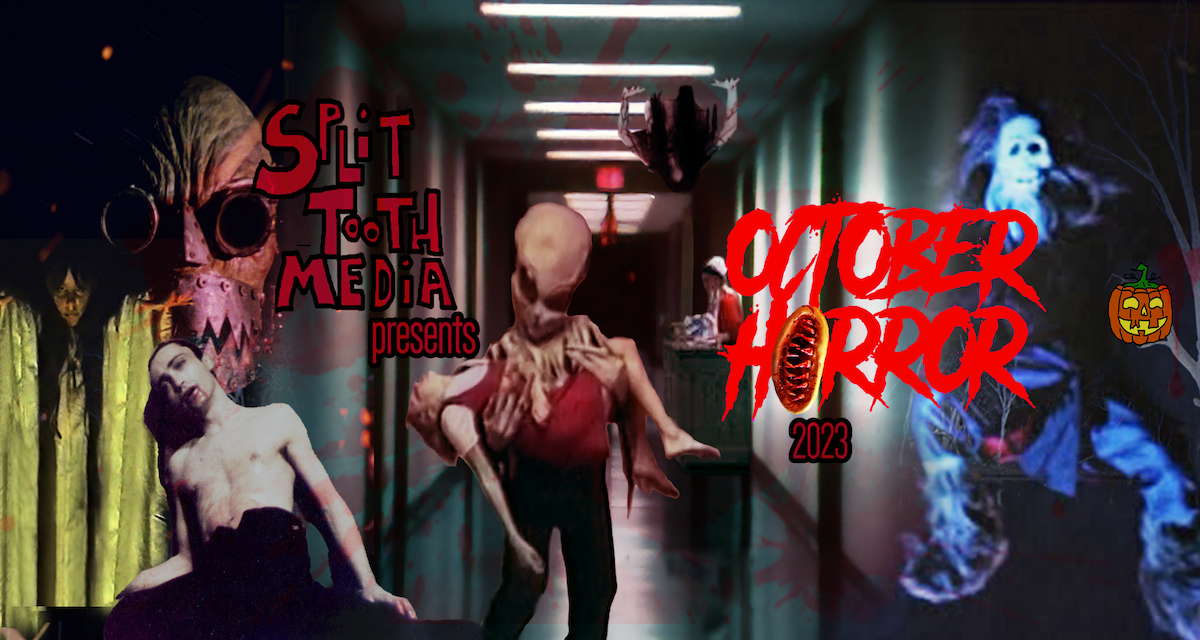
Stay up to date with all things Split Tooth Media and follow Oliver on Twitter
(Split Tooth may earn a commission from purchases made through affiliate links on our site.)

